Midyear Recap
We are at the midpoint of 2020, and the last six months might feel like the longest decade of your life! We have faced health, social, and economic issues that continue to impact our communities and our economy. With so much noise and so many headlines, it might be hard to sift through the information to find real data that you can count on. The good news is, when it comes to the economy and financial markets, the stock market and economic indicators do not lie.
We know the stock market is forward-looking: It focuses on what’s happening today and what it sees on the path ahead. Much of the real-time economic data we follow—such as transportation activity, home sales, and jobless claims—is showing tangible evidence that economic activity is making a comeback though the path remains uncertain due to the multi-staged recovery.
Stocks are already pricing in a steady economic recovery beyond 2020 that may be supported if we receive breakthrough treatments to end the coronavirus. However, the optimism we see in the S&P 500 Index currently might put a lid on potential gains for the remainder of the year. In other words, it is unlikely that we will continue to experience the current pace of gains given how far we have come since the lows seen in March.
Turning to the bond market, we expect interest rates to head higher over the rest of 2020 but remain near historically low levels. Even with a slight increase in rates, 2020 will likely be the lowest interest-rate environment on record.
2020 Elections
We are expecting a challenging environment that may lead to more volatility for the next few months, especially with the highly anticipated presidential election in November. Historically, when a president has been up for reelection, it has tended to boost stocks. So, it isn’t about Republican or Democrat — it’s about trying to boost the economy and stock prices by the time voters go to the polls.
History also shows that the US economy may have bearings on the presidential election outcomes. If there has been a recession during the year or two before the election, the incumbent president has been more likely to lose. If there has been no recession ahead of the election, the incumbent president has tended to win. In fact, the economy has incredibly predicted the winning president every year going back to President Calvin Coolidge in 1924.

In addition, how stocks perform the three months leading into the election has delivered a solid track record on who will win the White House. The S&P 500 has predicted every presidential election winner since 1984, and 87% of the winners since 1928, with stocks favoring the incumbent party if stocks are higher in the three-month period before the election.
Over the long-term, the market is mostly indifferent to politics. So, while the upcoming election might bring anxiety, we encourage investors to look beyond the next six months and remind them that the most important element of stock prices is a company’s ability to make a profit.
Investment Outlook
As investment advisors, we feel that certain asset classes and sectors may be better positioned for potential growth.
- We continue to favor large stocks over small stocks due to the uncertainty of the coronavirus and the impact it may have on companies with less capital access, less business model diversification, and a lack of competitive advantage relative to peers.
- We believe technology, healthcare, and consumer staples will continue to be good long-term areas of the market in addition to the short-term. Whether the economy is shutdown or fully up and running, these sectors may show more resilience than others.
- We favor US stocks over international stocks. Though the United States has its fair share of issues, the global economy still looks to the US as the leader. We feel US stocks will continue to show more stability than other regions.
- We prefer corporate bonds over government bonds. While treasuries proved to be a safe haven during the market selloff, their yields are near all-time lows. We would rather invest more heavily in corporate bonds for higher yields and though we know there are more risks involved, we feel the return potential of corporate bonds outweighs the likelihood of corporate defaults.
We understand that 2020 has been historically volatile and issues such as the upcoming election and COVID-19 certainly do not bring a clearer picture. However, the recent economic data shows there is light at the end of the tunnel. Financial markets are broad, so it is important to remember that many areas of the market can perform well despite uncertainty – as has been seen more recently in the technology sector, for example. We are committed to helping our clients navigate the current market while allocating for long-term success.
Disclosure:
The opinions voiced in the material are for general information only and are not intended to provide specific advice or recommendations for any individual. All performance referenced is historical and is no guarantee of future results. All indices are unmanaged and may not be invested into directly. The opinions expressed in this material do not necessarily reflect the views of LPL Financial.
Stock investing involves risk including loss of principal. Bonds are subject to market and interest rate risk if sold prior to maturity. Bond values will decline as interest rates rise and bonds are subject to availability and change in price. The market value of corporate bonds will fluctuate, and if the bond is sold prior to maturity, the investor’s yield may differ from the advertised yield. Government bonds and Treasury bills are guaranteed by the US government as to the timely payment of principal and interest and if held to maturity, offer a fixed rate of return and fixed principal value.
The Standard & Poor’s 500 Index is a capitalization weighted index of 500 stocks designed to measure performance of the broad domestic economy through changes in aggregate market value of 500 stocks representing all major industries.
Because of their narrow focus, sector investing will be subject to greater volatility than investing more broadly across many sectors and companies.
International investing involves special risks such as currency fluctuation and political instability and may not be suitable for all investors.







